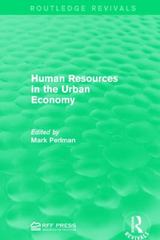Question
Exam 2 Study guide Chapter 6 Taxes and Subsidies Effect of a tax - graph and calculate, price buyers pay (Pd), price sellers receive (Ps),
Exam 2 Study guide
Chapter 6 Taxes and Subsidies Effect of a tax - graph and calculate, price buyers pay (Pd), price sellers receive (Ps), consumer and producer surplus, deadweight loss, tax revenue and tax incidence/burden (buyers and sellers) Apply the tax-wedge shortcut Impact of elasticity on tax incidence Impact of a subsidy - graph and calculate price buyers pay, price sellers receive, total subsidy payment Apply the subsidy-wedge shortcut
Chapter 19 Public Goods and the Tragedy of the Commons Define nonexcludable Define nonrival Classify goods as public goods, private goods, common resources, and club goods private non- rival goods) Free riders Tragedy of the commons Private Property rights Individual transferable quotas Chapter 11 Costs and Profit Maximization Under Competition Characteristics of a competitive market (type of product, demand curve) Price-takers Long run Short run Fixed input Variable input Sunk cost Profit Total revenue Total cost Variable cost Fixed cost Implicit cost Accounting profit vs economic profit Marginal revenue Marginal cost Profit maximization for a single firm in a competitive market (Identify and calculate profit given these scenarios: Short-run economic profit, loss, zero "normal profits") Average cost, average variable cost, average fixed cost
Shutdown
When to loss-operate when , and p < AC Long Run Supply curve "planning curves" Increasing, Decreasing, and Constant cost industry Economies of scale Entry and Exit, Short run vs Long run, in a competitive market
Step by Step Solution
There are 3 Steps involved in it
Step: 1

Get Instant Access to Expert-Tailored Solutions
See step-by-step solutions with expert insights and AI powered tools for academic success
Step: 2

Step: 3

Ace Your Homework with AI
Get the answers you need in no time with our AI-driven, step-by-step assistance
Get Started


